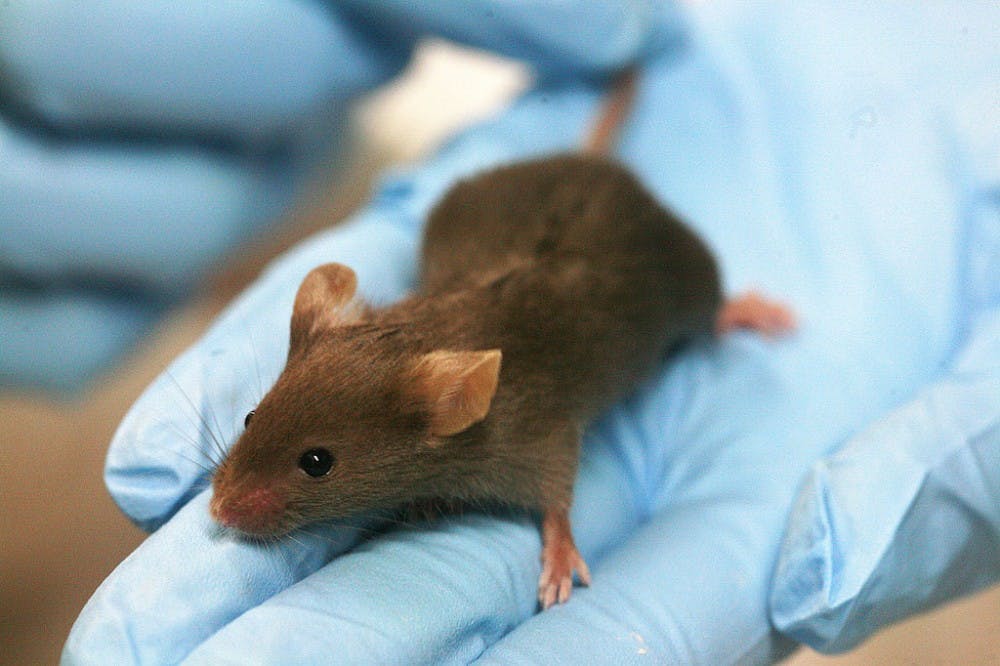First evolved in animals 550 million years ago, the ability to see is essential to life. It helps animals navigate the world around them. Researchers at the University of California, Berkeley (UC Berkeley), may have found a way to reverse blindness caused by retinal degeneration and give people back the ability to fully experience the world.
Retinal degeneration is a set of diseases that cause progressive, continuous loss of vision, until the person goes completely blind. The most common types of retinal degeneration are age-related macular degeneration (AMD) and retinitis pigmentosa (RP). In the U.S., RP afflicts one in 3,000 individuals, totaling about 50,000 to 100,000 people. AMD affects 170 million people worldwide, affecting one in 10 people over 55 years old.
In a fully functioning eye, light enters through the cornea, the thin film over the eye, then is filtered into the pupil and through another lens called the crystalline lens. The light then travels to the back of the eye where it hits the retina. The retina is made up of three main types of neurons: photoreceptors, bipolar cells and ganglion cells. Light receptors on the photoreceptor cells, commonly known as rods and cones, recognize light and, through a cascade of signaling through proteins and other molecules, turn the light signal into an electrical signal. This electrical signal then travels through the bipolar cell and to the ganglion cells, which carry the signal to the brain where it is interpreted into a picture.
When the photoreceptors are lost because of retinal degeneration, the whole pathway is broken and the individual can no longer interpret light; they are blind.
A simple answer to retinal degeneration is to find another way to transmit light signals into electrical signals, since the photoreceptor cells are no longer there to do that.
The only current treatment is an artificial retina which does just that — a camera, attached to glasses that the individual wears, transmit signals to a patch on the eye which then transmits electrical impulses to the remaining cells. Those signals are interpreted by the brain as light. Although this technology gives patients back some sight, it is nowhere near as good as normal sight, and the glasses are large and awkward.
Researchers at Berkeley thought there might be another way: transform the existing ganglion cells into ones that can convert light into an electrical signal.
The researchers started by loading a deactivated adeno-associated virus (AAV) with a gene for green opsin, the specific protein in a photoreceptor cell that normally allows for green and yellow vision. The virus with the green opsin was then injected into the eyes of blind mice so that the virus would transmit the green opsin into the ganglion cells. After receiving the green opsin gene, the ganglion cells would presumably begin to produce green opsin and be able to interpret light signals.
It seemed to work. About 90 percent of the ganglion cells became light sensitive. Mice that received green opsin could reliably detect motion and brightness.
Ehud Isacoff, a UC Berkeley professor of Molecular and Cell Biology and director of the Helen Wills Neuroscience Institute, mused at how simple the solution seemed to be.
“That this system works is really, really satisfying, in part because it’s also very simple,” Isacoff said in a press release. “Ironically, you could have done this 20 years ago.”
The mice’s vision returned to the point that, if they were humans, they would be able to read and could use an iPad. Isacoff found this result to be particularly striking.
“This powerfully brought the message home,” Isacoff said. “After all, how wonderful it would be for blind people to regain the ability to read a standard computer monitor, communicate by video, watch a movie.”
The researchers are now developing this technique for humans. They would have to inject thousands of times more AAVs because humans have more ganglion cells than mice, but they are hopeful that clinical trials could begin in three years.
Isacoff is excited for the future of this treatment.
“With neurodegenerative diseases of the retina, often all people try to do is halt or slow further degeneration. But something that restores an image in a few months — it is an amazing thing to think about.”





